Climate & Environment
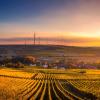 The Fox Group, led by Jerome Fox, assistant professor of chemical and biological engineering, was awarded $1.1 million of a five-year, $12.8 million U.S. Department of Energy grant that involves seven universities and institutions and paves the way for broader use of non-food oilseed crops in the chemical industry.
The Fox Group, led by Jerome Fox, assistant professor of chemical and biological engineering, was awarded $1.1 million of a five-year, $12.8 million U.S. Department of Energy grant that involves seven universities and institutions and paves the way for broader use of non-food oilseed crops in the chemical industry.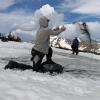 An annual experiment based out of CU Boulder’s century-old Mountain Research Station aims to measure the effects of warming temperatures and faster snowmelt on alpine ecosystems by coating snowpack with thousands of pounds of black sand.
An annual experiment based out of CU Boulder’s century-old Mountain Research Station aims to measure the effects of warming temperatures and faster snowmelt on alpine ecosystems by coating snowpack with thousands of pounds of black sand. Sheila Watt-Cloutier made a bold move and helped kick-start what many describe as a sea change in how the international community thinks about climate change.
Sheila Watt-Cloutier made a bold move and helped kick-start what many describe as a sea change in how the international community thinks about climate change.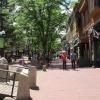 The city of Boulder plans to use CU Boulder data to study the effect of trees on urban heat for climate-mitigation planning.
The city of Boulder plans to use CU Boulder data to study the effect of trees on urban heat for climate-mitigation planning. President Biden has now signed the largest bill the U.S. has ever passed to address climate change. Professor Max Boykoff discusses the legislation’s impact with CU Boulder Today.
President Biden has now signed the largest bill the U.S. has ever passed to address climate change. Professor Max Boykoff discusses the legislation’s impact with CU Boulder Today.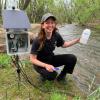 Researchers at CU Boulder have developed and validated a new sensor for E. coli risk detection that features an impressive 83% accuracy rate when detecting contamination in surface waters.
Researchers at CU Boulder have developed and validated a new sensor for E. coli risk detection that features an impressive 83% accuracy rate when detecting contamination in surface waters.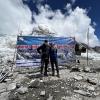 This past May, Joanna Lambert traveled around the globe, met with world leaders and hiked up the world’s highest mountain to speak about how climate change is increasing human and wildlife conflict around the world.
This past May, Joanna Lambert traveled around the globe, met with world leaders and hiked up the world’s highest mountain to speak about how climate change is increasing human and wildlife conflict around the world.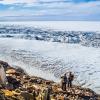 New research suggests the world's largest ice sheet may be more susceptible to climate change than previously thought. If the sleepy giant were to completely melt, it would cause global sea levels to rise by 52 meters, or about 170 feet.
New research suggests the world's largest ice sheet may be more susceptible to climate change than previously thought. If the sleepy giant were to completely melt, it would cause global sea levels to rise by 52 meters, or about 170 feet.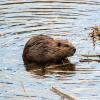 In a paper published this week, CU Boulder Professor Joanna Lambert and 19 other scientists call for a portion of federal land in 11 states to be used to ‘rewild’ the American West.
In a paper published this week, CU Boulder Professor Joanna Lambert and 19 other scientists call for a portion of federal land in 11 states to be used to ‘rewild’ the American West.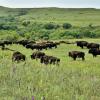 The restoration of grassland ecosystems may need more of a guided, hands-on approach over time, according to a new review of global conservation efforts.
The restoration of grassland ecosystems may need more of a guided, hands-on approach over time, according to a new review of global conservation efforts.


